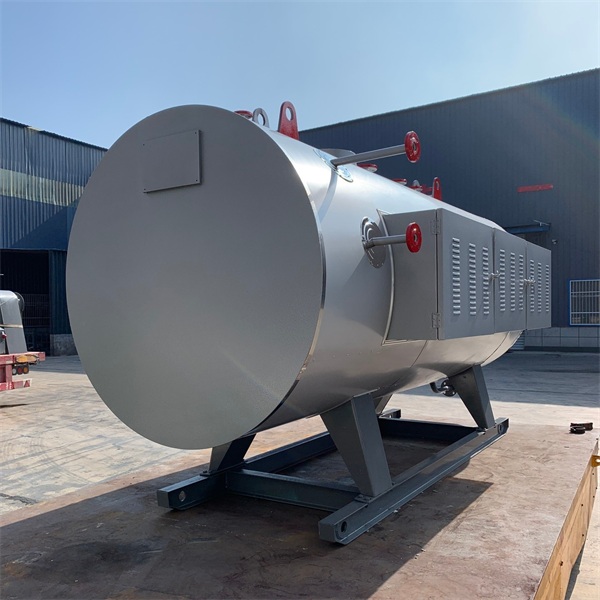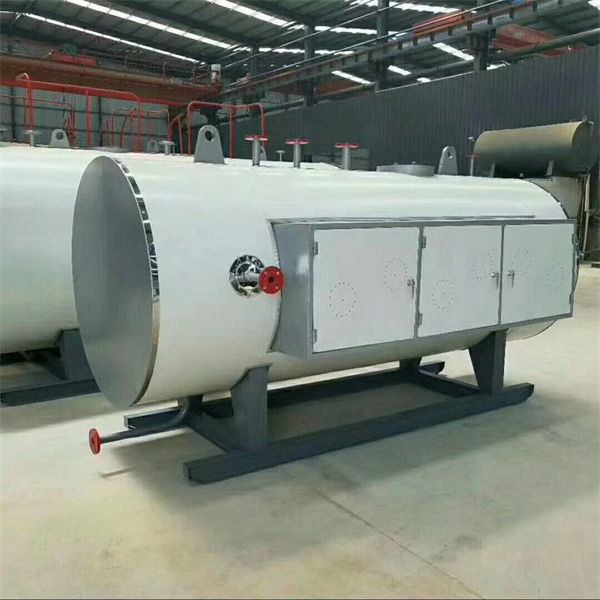Waste heat recovery boiler
- Heat power
Order on demand
- Energy
Waste heat gas
Email:[email protected]
| Heat power | Order on demand |
| Energy | Waste heat gas |

Unlike conventional boilers, there is no combustion process in a waste heat boiler, and there is no combustion-related equipment, which is essentially just a heat exchanger.
It cooperates with the gas turbine, the exhaust of the gas turbine (temperature is about 500~600 °C) enters the waste heat boiler, heats the water in the heating surface, and the water absorbs heat into high temperature and high pressure steam and then enters the steam turbine to complete the combined cycle.
Waste heat boiler refers to a boiler that uses the waste heat in the exhaust gas, waste or waste liquid in various industrial processes and the heat generated by the combustion of its combustible substances to heat water to a certain temperature. With waste heat recovery, hot water, steam or organic heat carriers can be produced for use in other sections.

Source of waste heat
(1) High temperature flue gas waste heat: a common form in the market, characterized by large output, concentrated production points, strong continuity, easy to recover and use, take away heat accounted for 40~50% of the total heat, recovered heat can be used for production or domestic heat and power generation.
(2) High temperature slag waste heat: such as blast furnace slag, converter slag, electric furnace slag, etc., the slag temperature is above 1000 °C, and the heat taken away accounts for 20% of the total heat.
(3) Waste heat of high-temperature products: such as coke oven coke, steel ingot billet, high-temperature forgings, etc., the temperature is very high, containing a lot of waste heat.
(4) Combustible waste gas and waste liquid waste heat: such as blast furnace gas, catalytic cracking regeneration waste gas of refineries, black liquor of paper mills, etc.
(5) Chemical reaction waste heat: such as metallurgy, sulfuric acid, phosphoric acid, fertilizer, paint and other industrial sectors will produce a large amount of chemical reaction waste heat.
(6) Waste heat of cooling medium: such as a large amount of cooling water discharged from cooling devices such as water jackets of industrial furnaces, and the steam produced by various vaporization cooling devices contain a large amount of waste heat.
They can all be used wisely.
| Model | Back water temp. | Outlet water temp. | Shipping size(m) |
| CWDR0.3-70/95-D | 65℃ | 90℃ | 1×1×2.5 |
| CWDR0.5-70/95-D | 65℃ | 90℃ | 1.1×1.1×2.6 |
| CWDR1-70/95-D | 65℃ | 90℃ | 2.5×1.5×1.8 |
| CWDR2-70/95-D | 65℃ | 90℃ | 3.1×1.7×2.3 |
| CWDR4-70/95-D | 65℃ | 90℃ | 3.3×2.15×2.3 |
| CWDR6-70/95-D | 65℃ | 90℃ | 4.3×2.23×2.6 |
| CWDR8-70/95-D | 65℃ | 90℃ | 5×2.9×3.1 |
| CWDR10-70/95-D | 65℃ | 90℃ | 5.3×2.9×3.1 |
| CWDR20-70/95-D | 65℃ | 90℃ | 6×2.3×3.2 |
it is mainly used for hot pressing of fiberboard, particle board, laminate, plywood, veneer and heating of wood drying equipment, drying equipment, coating equipment and gluing machines.
it is mainly used for gypsum board drying, concrete component solidification protection and prefabrication production, tile molding, decorative material drying and linoleum production line heating.
it is mainly used for asphalt heating, dissolution, asphalt silage tank, asphalt concrete and emulsified asphalt heating and insulation.
it is mainly used for heating drying and setting devices, hot melt dyeing devices, dyeing and printing devices, dryers, dryers, calenders, flatteners, washing machines, rolling mills, ironing machines, hot air stwelfare, etc.
it is mainly used for the heating of tunnel drying rooms, skimming baths and phosphoric acid treatment equipment.
it is mainly used for heating and heat preservation of gas storage tanks, mixing stations and distribution stations.
it is mainly used for high-temperature heat sources required for the development of new technologies, new materials and new products in national defense scientific research.
it is mainly used for graphite electrodes, carbon products, asphalt melting, kneading pot heating, extrusion heating.
it is mainly used for heavy oil tanks, asphalt tanks, sulfur tanks on ships and containers that need to be heated and insulated.

Please feel free to contact us, fill out the form below and one of our representatives will contact you as soon as possible.